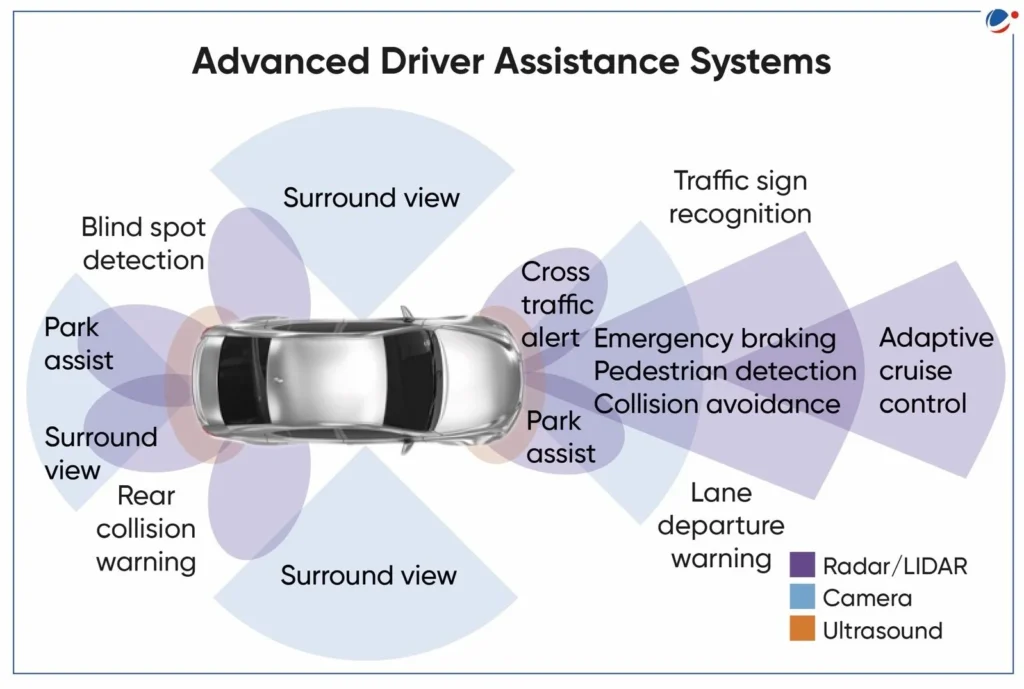Key Takeaways
- India’s auto industry struggles to innovate due to poor R&D infrastructure, according to a report by NITI Aayog.
- India’s R&D investment is among the lowest globally, especially in emerging tech like EVs and autonomous vehicles.
- Minimal collaboration between academia, industry, and research bodies is hindering innovation.
- Overdependence on foreign tech increases costs and slows domestic progress.
- NITI Aayog urges significant investment and ecosystem development to foster innovation and global competitiveness.
India’s Auto Innovation Barrier: Why Growth Is Slowed by R&D Deficit
India, one of the world’s largest automobile markets, has long been recognized for producing budget-friendly vehicles at scale. But when it comes to leading the charge on next-gen automotive technologies—electric vehicles (EVs), autonomous driving systems, or AI-powered manufacturing—the country is struggling to keep pace.
According to a recent report released by NITI Aayog, India’s auto industry struggles to innovate due to poor R&D infrastructure, a challenge that’s proving to be a major obstacle in its global growth trajectory.
The Elephant in the Engine Room: Inadequate R&D Investment
The report doesn’t mince words. One of the most “critical barriers” to India’s rise in the global automotive scene is its chronically low investment in Research and Development (R&D). When stacked up against innovation powerhouses like Germany, Japan, and the U.S., India’s R&D spending in the automobile sector barely registers.
“India’s spending on R&D remains among the lowest in the world,” the report states, “especially when compared to leading automotive nations.”
This lack of funding doesn’t just hamper India’s ability to keep up—it prevents it from even entering the race for cutting-edge automotive advancements.
Where India Lags: EVs, ADAS, and AI
Innovation isn’t optional in the modern auto industry—it’s the fuel that powers everything. From lithium-ion battery innovation and electric powertrains to Advanced Driver Assistance Systems (ADAS) and Artificial Intelligence-driven production lines, these technologies are no longer futuristic—they are industry standards.
Yet, as per the report, India is falling behind in each of these core areas:
- Battery Technology: Despite the growing demand for EVs, India’s battery innovation lags behind, forcing reliance on imports.
- ADAS: These systems—crucial for semi-autonomous driving—are largely absent from India-made vehicles.
- AI in Manufacturing: Smart factories, predictive maintenance, and robotic automation are concepts still in early adoption phases in India.

The result? Indian automotive companies continue to rely on foreign technologies, which not only inflates production costs but also erodes their global competitiveness.
Innovation Bottleneck: Industry-Academia Disconnect
One of the more surprising revelations in the NITI Aayog report is the weak link between academia, industry, and research institutions. In leading auto markets, university research labs and auto companies work hand in hand—translating academic breakthroughs into real-world applications.
But in India, that collaborative spirit is stunted. With limited interactions and few co-development programs, innovation is siloed. The report calls this lack of synergy one of the primary reasons why India is missing out on revolutionary automotive tech.
“This limited interaction restricts the exchange of ideas and technological breakthroughs that are crucial for developing next-generation automotive solutions.”
High Volume, Low Innovation: The Indian Auto Paradox
Indian automakers are no strangers to success. They’ve mastered the art of producing high-volume, cost-efficient vehicles that meet domestic and export demands. Brands like Tata Motors and Maruti Suzuki have become household names not just in India but across emerging markets.
Yet, this low-cost manufacturing model has come at the expense of innovation. There’s a stark absence of unique, globally differentiated products. Without original design, new tech, or advanced capabilities, Indian vehicles struggle to stand out in competitive international markets dominated by tech-first auto giants.
A Call to Action: NITI Aayog’s Guide to Advancement
So, what’s the way forward?
NITI Aayog isn’t just highlighting problems—it’s pushing for solutions. The report strongly recommends a massive increase in R&D spending to create a robust ecosystem for innovation.
“To remain competitive and achieve long-term growth, India must significantly increase its R&D expenditure,” the report asserts, “and build a robust ecosystem that fosters innovation and technological advancement.”
Key pillars of this innovation-focused ecosystem include:
- Public-Private Partnerships (PPPs): Encouraging collaboration between government research bodies and private manufacturers.
- Academic Alliances: Funding university-level automotive research programs aligned with industry needs.
- Startup Incubation: Supporting automotive tech startups in areas like mobility-as-a-service (MaaS), battery recycling, and smart diagnostics.
- Technology Parks: Establishing dedicated auto-tech zones with testing labs, simulators, and prototyping facilities.
Lessons from the Global Grid
Globally, countries that dominate the automotive innovation space offer India a roadmap.
- Germany invests heavily in university-led auto research, with companies like BMW and Volkswagen funding in-house R&D and external innovation labs.
- Japan’s focus on kaizen (continuous improvement) has made Toyota and Honda synonymous with innovation.
- South Korea, despite its size, has propelled Hyundai and Kia to the forefront through long-term investment in EVs and autonomous driving.
India, with its demographic dividend and market potential, has every reason to aspire for similar leadership. But as the report underscores, ambition without infrastructure is like a car without fuel.
Conclusion
India’s automotive industry stands at a crossroads. While the country has proved its manufacturing prowess, it now faces the far greater challenge of innovating for the future. The NITI Aayog report is both a wake-up call and a blueprint. For India to shift gears from being a low-cost producer to a global innovation hub, it must reimagine its R&D priorities, foster deeper collaborations, and invest boldly in the future of mobility. The road ahead isn’t easy—but it’s a road well worth traveling.


